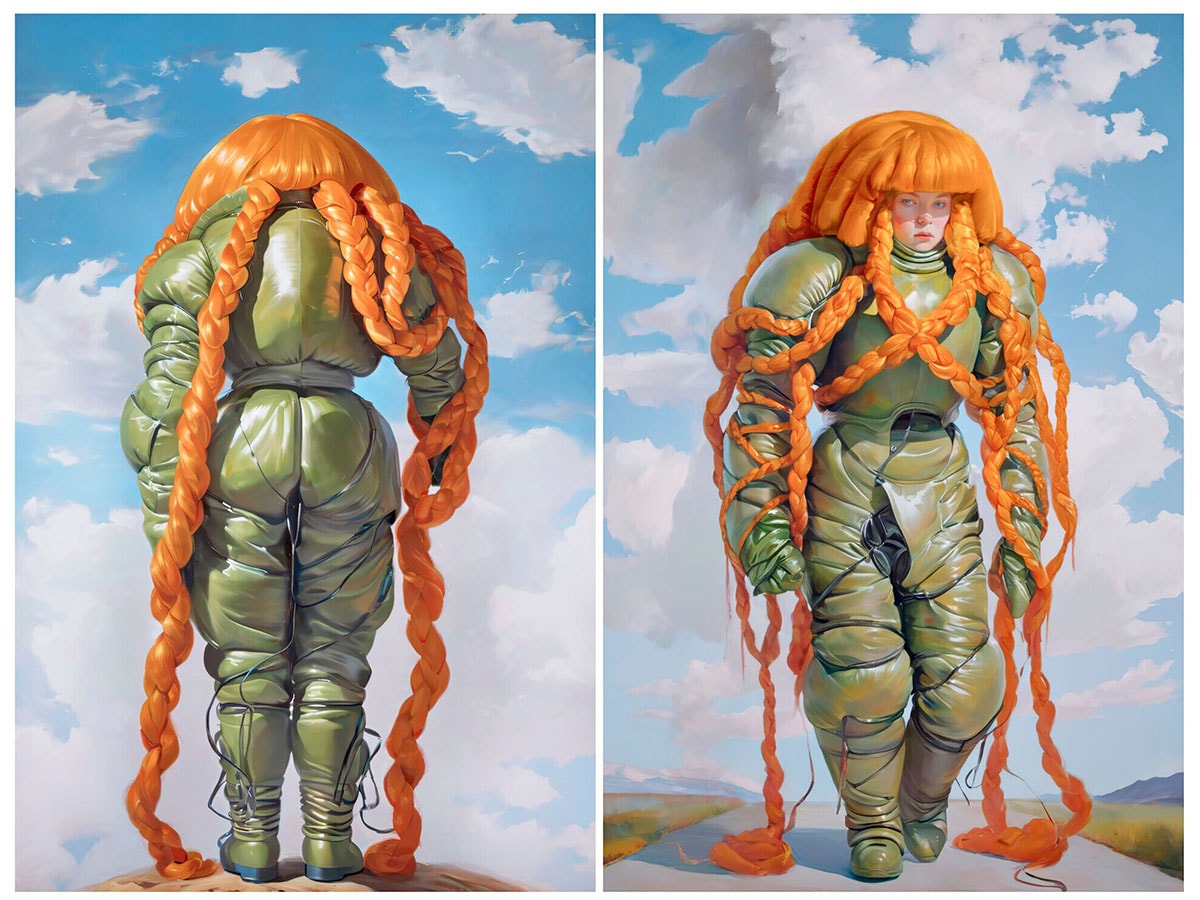 From February 20 to March 5, Christie’s is organizing a sale during which “Embedding Study 1 & 2” by Holly Herndon and Matt Dryhurst will go under the hammer.
From February 20 to March 5, Christie’s is organizing a sale during which “Embedding Study 1 & 2” by Holly Herndon and Matt Dryhurst will go under the hammer.
Image: Courtesy of Christie’s©
Artificial intelligence is becoming increasingly prevalent in the art world, sparking fascination as much as concern. The latest controversy concerns Christie’s, the famous auction house, which is planning an unprecedented sale of artworks created by AI. This initiative has not gone unnoticed and is the subject of growing opposition within the art community.
It’s safe to assume that Christie’s didn’t expect quite so much backlash when it announced its forthcoming “Augmented Intelligence” auction. Scheduled for February 20 to March 5, the sale has met with strong opposition, as evidenced by an online petition that has already garnered nearly 5,000 signatures.
The signatories are calling for the sale to be canceled, arguing that it jeopardizes the future of creators. In the firing line are programs such as Midjourney, Stable Diffusion and DALL-E, accused of drawing on human creativity without offering anything in return to the original artists. “Many of the artworks you plan to auction were created using AI models that are known to be trained on copyrighted work without a license. These models, and the companies behind them, exploit human artists, using their work without permission or payment to build commercial AI products that compete with them,” the petition reads.
This sale focuses on artists who use artificial intelligence in their creative process, including Refik Anadol, Harold Cohen, Pindar Van Arman, Holly Herndon & Mat Dryhurst, Alexander Reben and Claire Silver. It features some 20 lots, ranging from NFTs to sculptures, paintings and digital prints.
For its organizers, this event is a celebration of creativity augmented by artificial intelligence. “The auction redefines the relationship between art and technology, showing collectors human agency in the age of AI in Fine Art. From robotics to GANs to interactive experiences, artists incorporate artificial intelligence into their practices in many unique ways,” says Nicole Sales Giles, VP and director of digital art sales at Christie’s, quoted in a news release.
Also read: Ai-da is the humanoid robot storming the art market
Backlash is mounting
But the sale’s opponents take a very different stance. In a statement published on X (formerly Twitter), Ed Newton-Rex, founder of Fairly Trained, an organization campaigning for the ethical use of artificial intelligence, questions the legitimacy of such an approach. In his view, Christie’s is indirectly condoning a form of artistic theft by promoting works produced using controversial AI models. “[W]hy are Christie’s condoning these models by helping sell these works for tens or even hundreds of thousands of dollars, when the models are directly leading to the impoverishment of so many artists that they’ve stolen from?” his X post reads.
In the face of these accusations, the auction house is defending its position by highlighting the legitimacy of the selected artists, some of whom are already exhibited in renowned museums. A Christie’s spokesperson told The Art Newspaper that these creators use AI as one tool among others to enrich their artistic practice, without it compromising the value of their approach.
The debate is far from over. While artificial intelligence is disrupting many sectors, the question of respect for copyright and the role of human creators in the face of algorithms remains more relevant than ever. Indeed, the United States Copyright Office recently stated that visual works generated by AI without human intervention will not be eligible for legal protection. “Copyright protection remains available where AI functions as an assistive tool that allows human authors to express their creativity,” the organization states in an official report. However, the United States Copyright Office has not ruled on the question of whether these artificial intelligence tools can be trained using millions of visual and textual works collected on the internet.
Pending a decision from the public authorities—and perhaps also the courts—artists and scientists are joining forces to protect human creation from artificial intelligence. At the University of Chicago, a team of computer engineers led by Ben Zhao has designed Glaze, a program that subtly modifies the pixels of an image to disrupt the ability of AI to analyze and reproduce the artistic style of a creator. In the same vein, these researchers have also developed Nightshade, an even more aggressive tool that alters images to actively mislead AI and distort meaning.
The meteoric rise of artificial intelligence in the arts raises issues that go far beyond the simple framework of creation. Behind the technological enthusiasm lies a fundamental debate on the recognition of human work, intellectual property and the limits of automation. As these tools redefine artistic, legal and economic practices, the question is no longer just what AI can do, but how far we want to let it go.
 From February 20 to March 5, Christie’s is organizing a sale during which “Embedding Study 1 & 2” by Holly Herndon and Matt Dryhurst will go under the hammer.
From February 20 to March 5, Christie’s is organizing a sale during which “Embedding Study 1 & 2” by Holly Herndon and Matt Dryhurst will go under the hammer.
